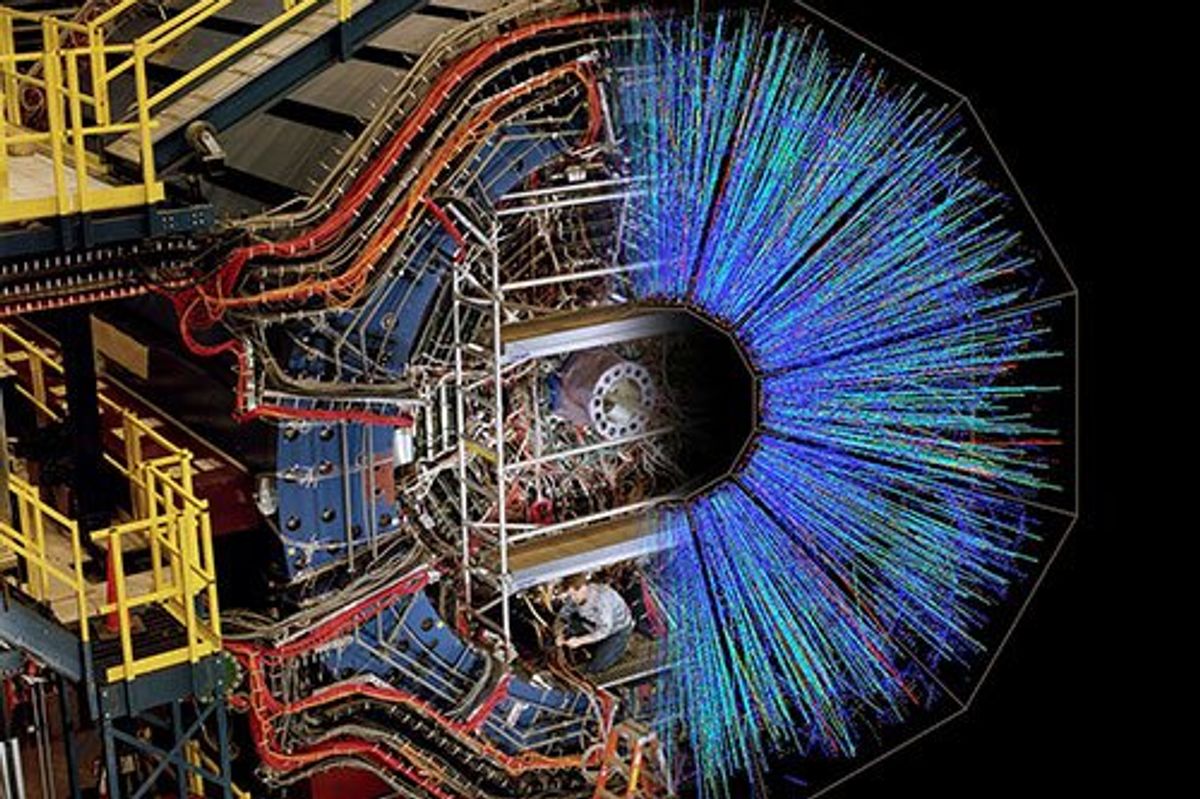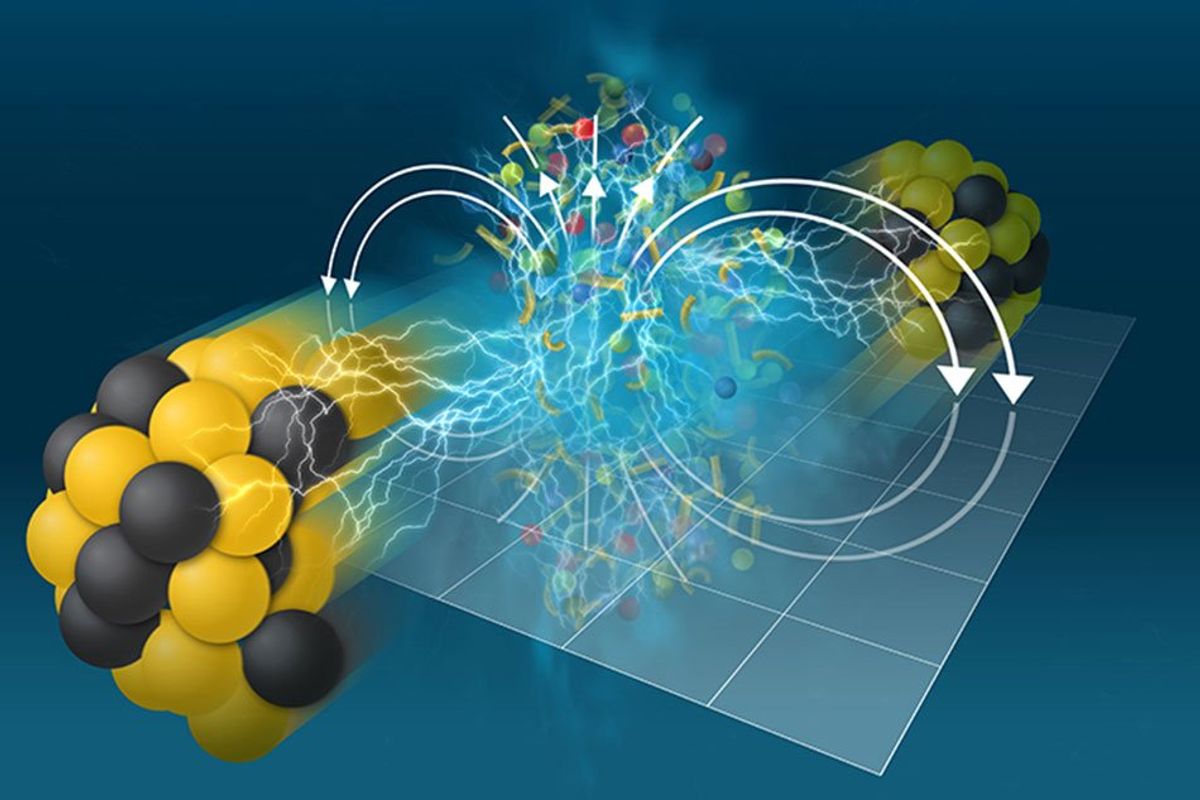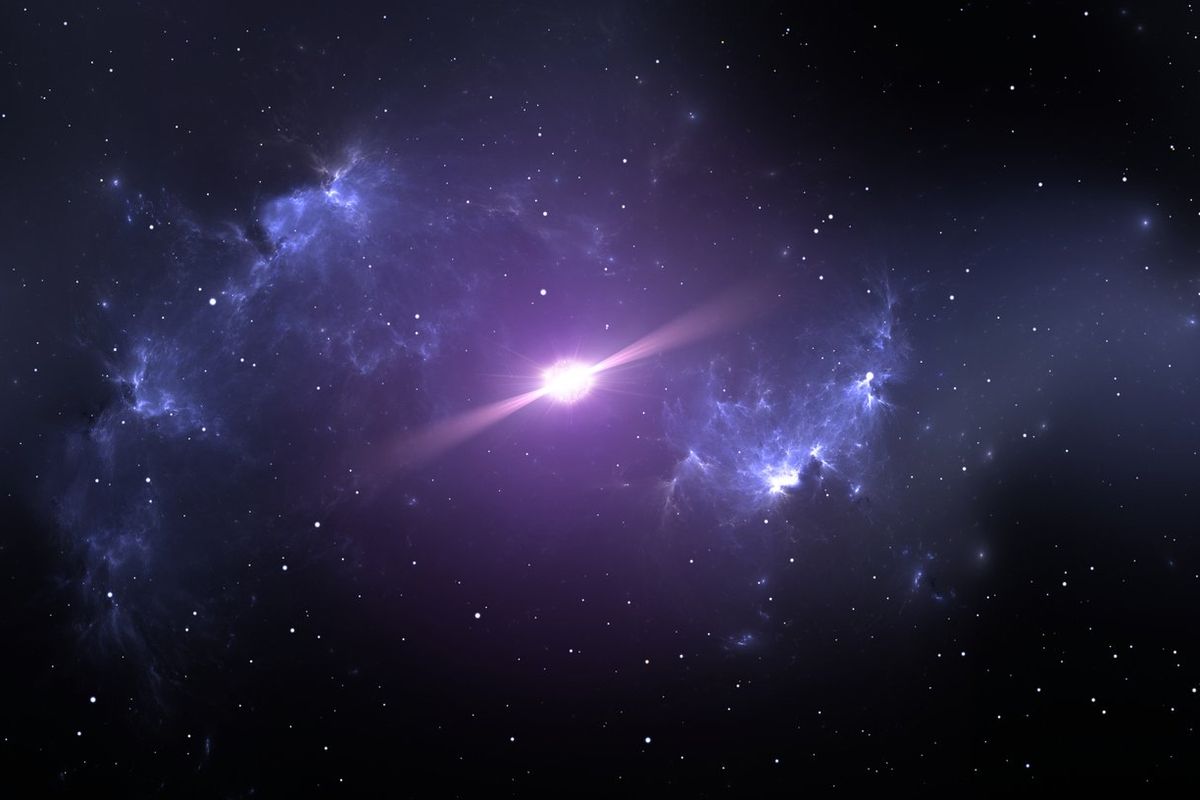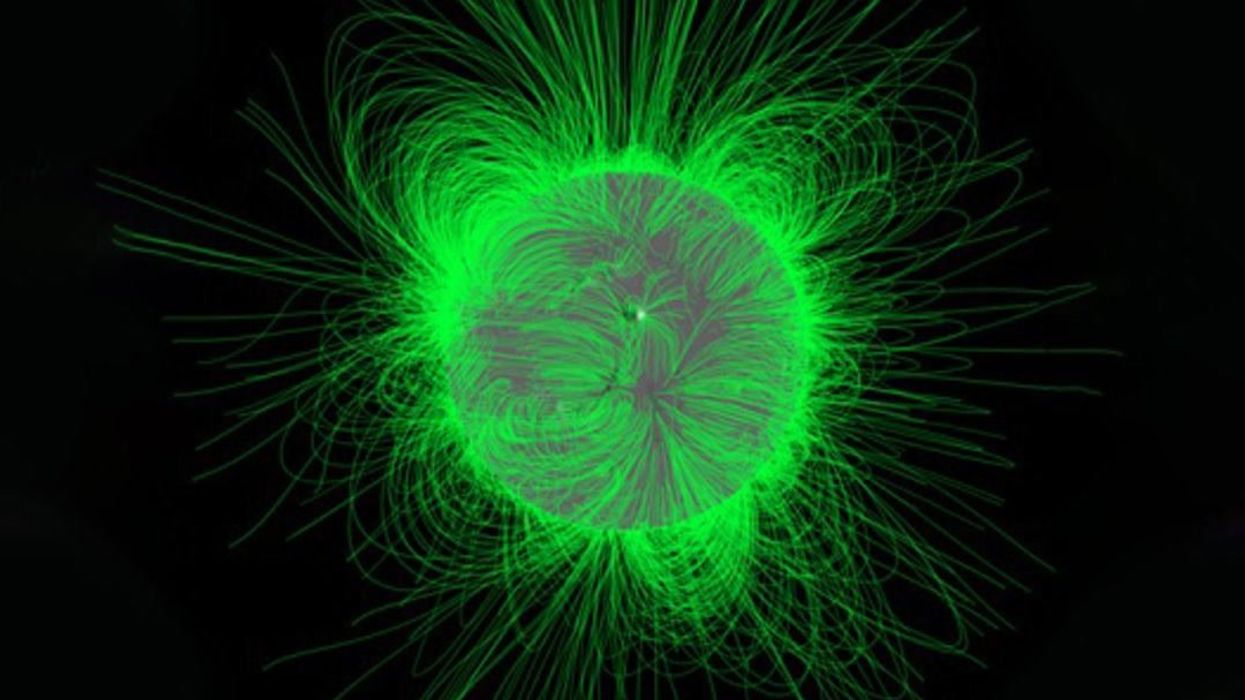Harriet Brewis
Mar 05, 2024
What If Earth's Magnetic Field Disappeared?
Backyard Media - INSH / VideoElephant
You may never have heard of magnetars, but they are, in a nutshell an exotic type of neutron star whose magnetic field is around a trillion times stronger than the Earth’s.
To illustrate their strength, if you were to get any closer to a magnetar than about 1,000km (600 miles) away, your body would be totally destroyed.
Its unimaginably powerful field would tear electrons away from your atoms, converting you into a cloud of monatomic ions – single atoms without electrons– as EarthSkynotes.
And yet, scientists have just discovered that there could be zones, right here on our beloved planet, where flashes of magnetism burst with strengths that make magnetars look positively feeble.
How on Earth is this possible? You ask. Well, the answer isn’t straightforward.
It begins at the US Department of Energy's (DOE) Brookhaven National Laboratory. Or, more specifically, at its Relativistic Heavy Ion Collider (RHIC).

After smashing together nuclei of various heavy ions in this massive particle accelerator, physicists at the Brookhaven lab found evidence of record-breaking magnetic fields.
Now, by measuring the motion of even smaller particles – quarks (the building blocks of all visible matter in the universe) and gluons (the “glue” that binds quarks together to form the likes of protons and neutrons) – scientists hope to gain new insights into the deep inner workings of atoms.
It’s important to note that, alongside these two elementary particles, there exist antiquarks.
For every “flavour” of quark, there is an antiquark, which has the same mass and energy at rest as its corresponding quark, but the opposite charge and quantum number.
The lifetime of quarks and antiquarks inside nuclear particles is brief. But the more we can grasp how they move and interact, the better experts will understand how matter – and by extension, the whole universe – is constructed.
In order to map the activity of these fundamental particles, physicists require a super-strong magnetic field.
To create this, the team at the Brookhaven lab used the RHIC to create off-centre collisions of heavy atomic nuclei – in this case, gold.
The powerful magnetic field generated by this process induced an electrical current in the quarks and gluons that were “set free” from the protons and neutrons that separated during the smashups.
The result is that experts now created a new way of studying the electrical conductivity of this “quark-gluon plasma” (QGP) – a state where quarks and gluons are liberated from the colliding protons and neutrons – which will help improve our grasp of these fundamental building blocks of life.

“This is the first measurement of how the magnetic field interacts with the quark-gluon plasma (QGP),” Diyu Shen, a physicist from China’s Fudan University and a leader of the new analysis, said in a statement.
And, indeed, measuring the impact of these off-centre collisions on the particles streaming out, is the only way of providing direct evidence that these powerful magnetic fields exist.
Experts had long believed that such off-centre smashes would generate powerful magnetic fields, however, for years it was impossible to prove.
This is because things happen very quickly in heavy ion collisions, which means the field doesn’t last long.
And by not long, we mean that it disappears in ten millionths of a billionth of a billionth of a second, which, inevitably, makes it tricky to observe.
Yet, however fleeting this field may be, it sure as hell is strong. This is because some of the non-colliding positively charged protons and neutral neutrons that make up the nuclei are sent spiralling off, resulting in an eddy of magnetism so powerful, they deliver more gauss (the unit of magnetic induction) than a neutron star.
“Those fast-moving positive charges should generate a very strong magnetic field, predicted to be 1018 gauss,” Gang Wang, a physicist of the University of California, explained.
By way of comparison, he noted that neutron stars – the densest objects in the universe – have fields measuring around 1014 gauss, while fridge magnets produce a field of about 100 gauss, and Earth’s protective magnetic field is a mere 0.5 gauss.
That means that the magnetic field created by the off-centre heavy ion collisions is “probably the strongest in our universe,” Wang said.

However, as explained before, the scientists couldn’t measure the field directly. So, instead, they observed the collective motion of charged particles.
“We wanted to see if the charged particles generated in off-centre heavy ion collisions were being deflected in a way that could only be explained by the existence of an electromagnetic field in the tiny specks of QGP created in these collisions,” Aihong Tang, a Brookhaven lab physicist, said.
The team tracked the collective motion of different pairs of charged particles while ruling out the influence of competing non-electromagnetic effects.
“In the end, we see a pattern of charge-dependent deflection that can only be triggered by an electromagnetic field in the QGP – a clear sign of Faraday induction (a law which states that changing magnetic flux induces an electric field),” Tang confirmed.
Now that the scientists have evidence that magnetic fields induce an electromagnetic field in the QGP, they can investigate the QGP’s conductivity.
“This is a fundamental and important property,” Shen said. “We can infer the value of the conductivity from our measurement of the collective motion.
“The extent to which the particles are deflected relates directly to the strength of the electromagnetic field and the conductivity in the QGP—and no one has measured the conductivity of QGP before.”
Sign up for our free Indy100 weekly newsletter
Have your say in our news democracy. Click the upvote icon at the top of the page to help raise this article through the indy100 rankings
Top 100
The Conversation (0)














